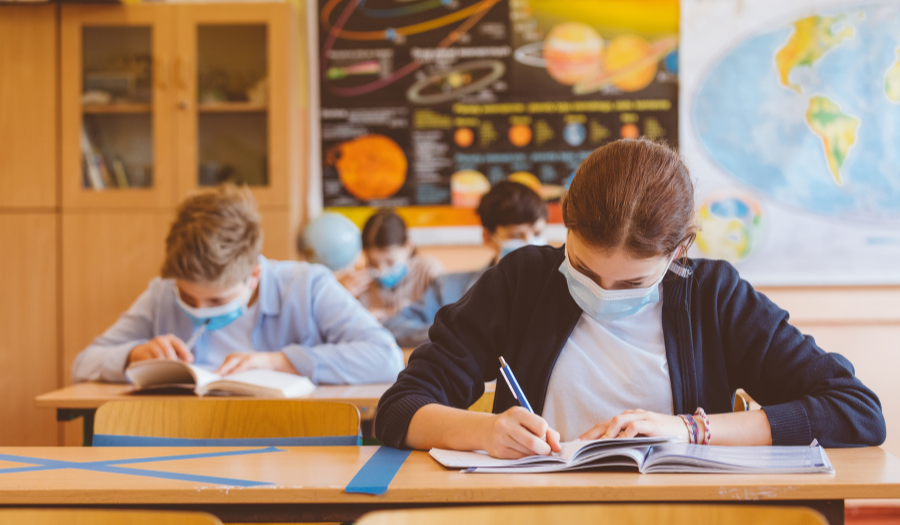Supporting Literacy Through Clearer, Amplified Sound

California’s Simi Valley Unified School District first tested Lightspeed’s Topcat instructional audio system at an elementary school serving deaf and hearing-impaired students, but quickly realized the system had much broader impact.
“There’s a tremendous benefit to all of our students,” said Jennifer Goldman, principal at the district’s Mountain View Elementary School.
Today, Lightspeed’s instructional audio system has been across the district’s 30 school sites and is considered an important tool in supporting literacy.
A recent pilot showed the Topcat classroom amplification system went beyond making it easier to hear: It gave students “full access to the sound inventory” – a key element to developing early literacy skills, Goldman said Jennifer Goldman, principal of Simi Valley’s Mountain View Elementary School.
Goldman said that access is crucial as young learners try to differentiate between soft phonetic sounds, such as in the word “sat.” Such nuanced sounds are difficult to distinguish even under normal conditions but become even harder to decipher if a teacher happens to turn to write on the board or walk around the room while speaking, not to mention if the teacher is wearing a mask as part of COVID safety protocols required in many in U.S. school districts.
“You’re devoting so much cognitive energy just trying to hear the information,” Goldman said.
Linking Amplification to Literacy
Research measuring the impact of instructional audio systems showed significant differences in amplified classrooms.
In a study of standardized tests in Oregon classrooms, first graders scored an average of 35% higher on the Dynamic Indicators of Early Literacy (DIBELS) skills and 21% higher on the Development Reading Assessment (DRA). Third-graders scored an average of 21% higher on Oregon’s Technology Enhanced Student Achievement test and 32% more words per minute in reading fluency. For reading fluency, words per minute averages for fourth and fifth-grade students in amplified classrooms attained were 35% higher.
The use of instructional audio systems has also been associated with improved phonological and phonemic awareness, a key building block for literacy. In one study, 78% of students who received phonological and phonemic instruction in an amplified classroom scored above the mean on the Yopp-Singer Test of Phonological and Phonemic Awareness, compared with 57% of students who learned in unamplified settings.
How does that translate to literacy? Only 9% of the children taught in amplified classrooms had scores indicating risk for reading problems, compared with 44% among those who received the instruction in an unamplified classroom and 57% of students who did not receive any instruction.
Improving Student Access to Clear Sound
Goldman said the audio clarity is particularly important for students with auditory processing and attention issues often referred for special education.
“When kids have access to the full range of sounds in the classroom … it comes in loud and clear for them,” she said. “Having that teacher voice no matter where you are in the classroom, it really captures the students’ attention.”
With measures such as mask-wearing, which muffle sound, appear to be here to stay for the near future, it’s even more crucial to ensure students access to clear auditory information, said Philip Scrivano, the district’s IT Director. Simi Valley USD tapped into pandemic-related federal funding to accelerate installation of Lightspeed’s instructional audio systems in each of its 900 classrooms in time for the 2021-2022 school year.
“We talk about students with hearing disability, but it’s every single student in the classroom that benefits,” he said.
Scrivano, who is hearing impaired, said the cumulative impact of enabling students to focus on learning, instead of struggling to hear over the course of a K-12 education represents significant educational benefits in addition to supporting classroom equity.
“When I walk into a classroom today… I have an equal ability to hear as every other student in the classroom. I pay more attention and I can relax and think a little bit more about the content versus what (the teacher) is saying.”
